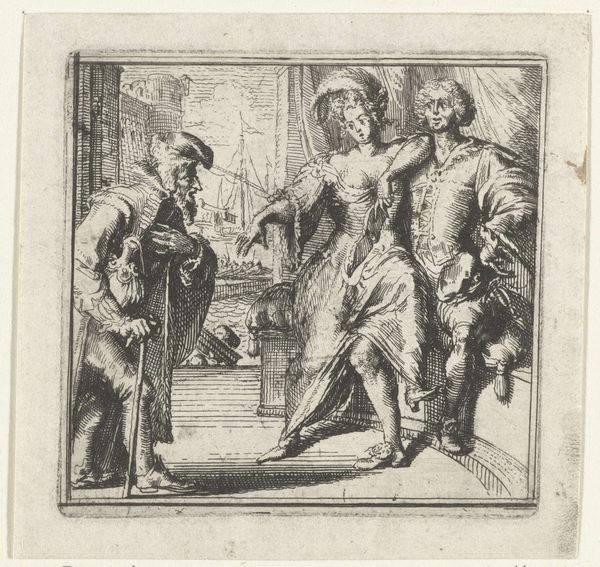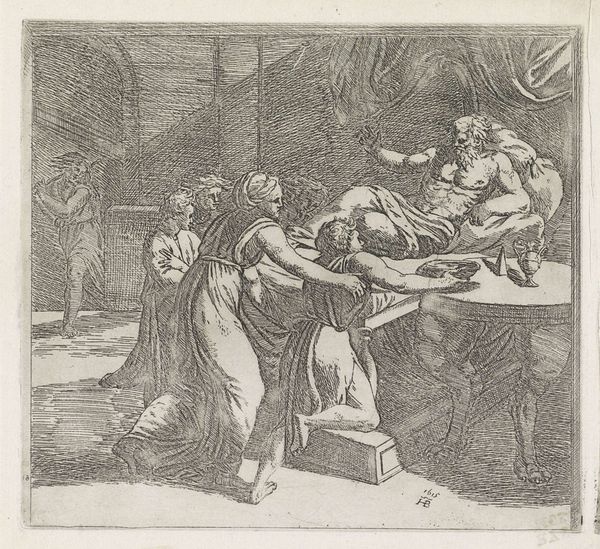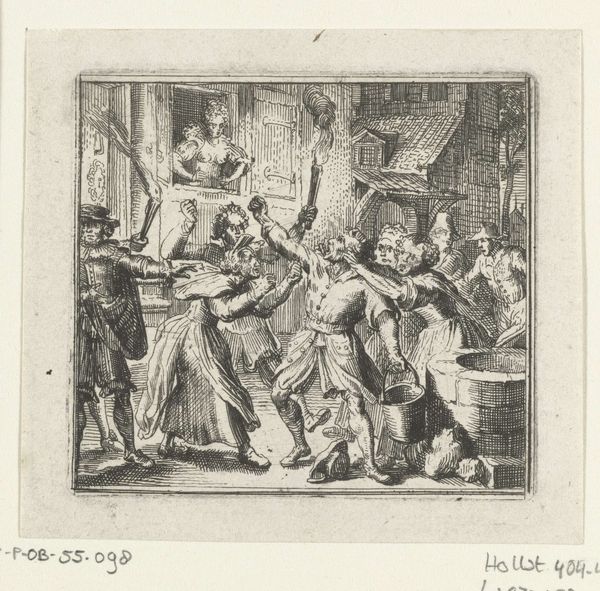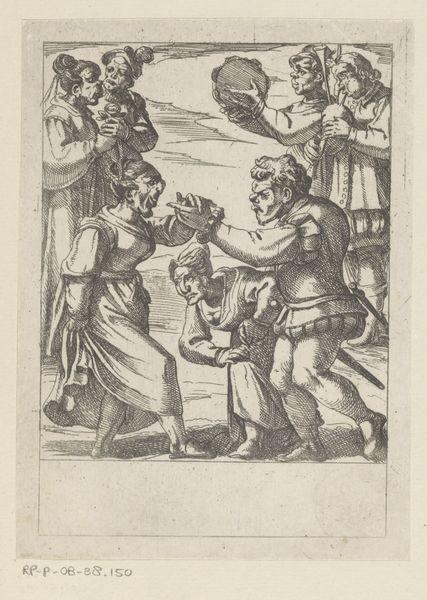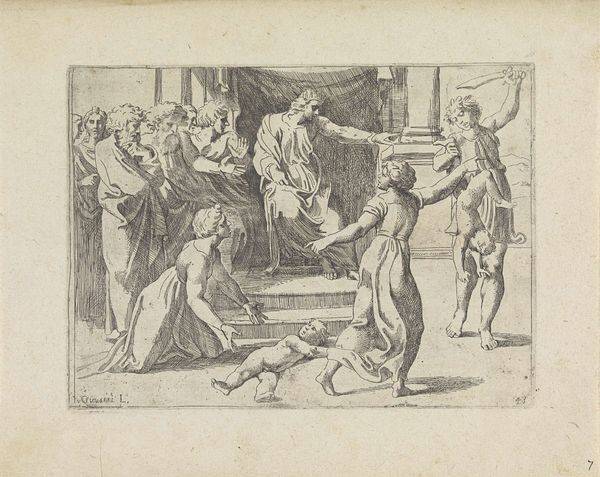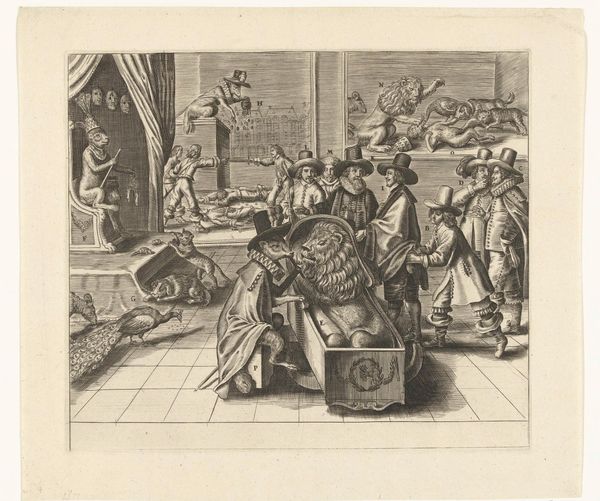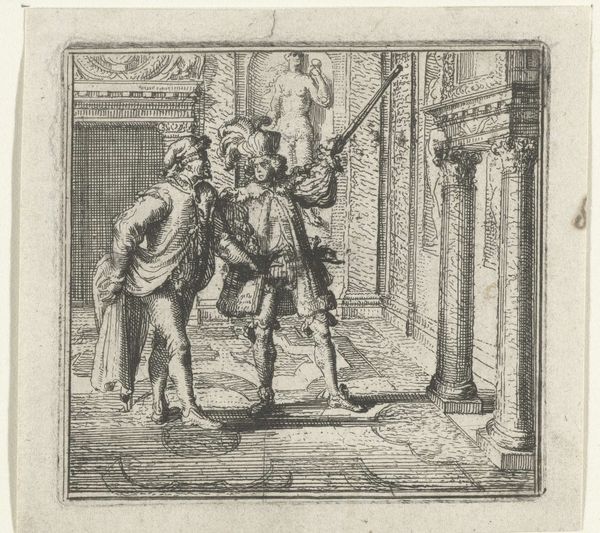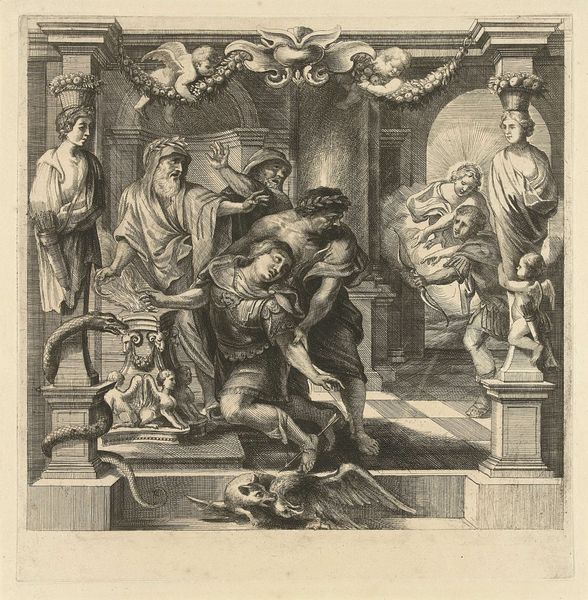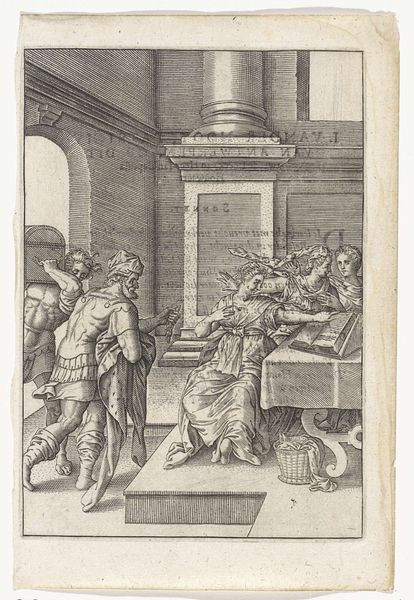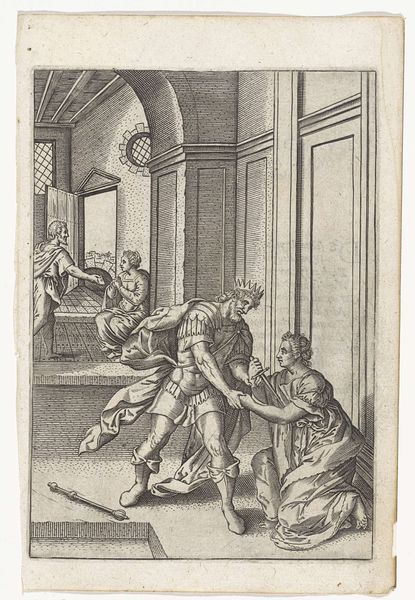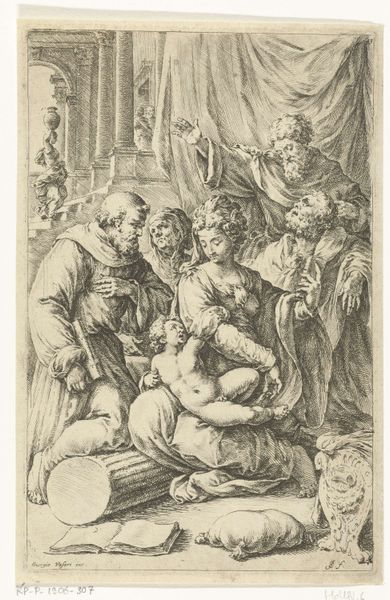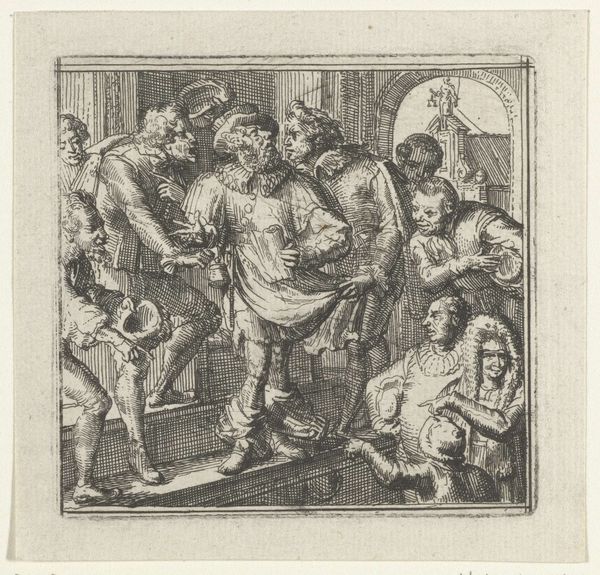
print, engraving
#
baroque
# print
#
pen sketch
#
old engraving style
#
sketch book
#
figuration
#
personal sketchbook
#
sketchwork
#
pen-ink sketch
#
line
#
pen work
#
sketchbook drawing
#
genre-painting
#
storyboard and sketchbook work
#
sketchbook art
#
engraving
Dimensions: height 75 mm, width 81 mm
Copyright: Rijks Museum: Open Domain
This illustration for Boccaccio’s Decamerone was made by Romeyn de Hooghe sometime before 1708, using etching. This is an intaglio printmaking process, where the artist scratches a design into a metal plate covered with a waxy ground, then immerses it in acid, which bites away the exposed lines. The plate is then inked, the surface wiped clean, and pressed onto paper. The technique lends itself to extremely fine detail – you can see it in the figures’ clothing and expressions. But note also how much labor would have been involved in the production of this image. Every line on the page was physically inscribed. The print medium also allowed for distribution of the image on a mass scale, and enabled the artist to reproduce and sell this image many times over. This reality ties the image to wider social issues of labor, politics, and consumption, and the vast amount of work involved in its original production. This close attention to materials, processes, and context allows us to understand the full meaning of this artwork.
Comments
No comments
Be the first to comment and join the conversation on the ultimate creative platform.

